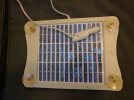John Nixon
New Member
- Joined
- Aug 16, 2016
- Messages
- 3
- Reaction score
- 0
- Country
- United Kingdom
Hello all
I have zero experience of dash cams. A friend has problems with vandalism whilst parked, and wants a dashcam fitted, preferably via lighter socket. Could be on for hours at a time, so need to find out current drawn. Reviews seen so far seem vague about such details. Also don't know which sort for this purpose. Any advice gratefully received
I have zero experience of dash cams. A friend has problems with vandalism whilst parked, and wants a dashcam fitted, preferably via lighter socket. Could be on for hours at a time, so need to find out current drawn. Reviews seen so far seem vague about such details. Also don't know which sort for this purpose. Any advice gratefully received



